Some facts about the Tokyo Marathon
The Tokyo Marathon was established in 2007. It usually takes place in late February, early March. It is an IAAF Gold label road race and one of the six Abbott World Marathon Majors. It is one of the largest marathons in the world with 37,500 participants with several elites from around the world toeing the starting line. The race begins at the Tokyo Metropolitan Government Building and ends near the Tokyo Station/Gyoko-dori Ave. “The Tokyo Marathon course symbolizes the past, present and the future of Tokyo”, as per the Tokyo Marathon website. This is one flat and fast course, much like the Berlin Marathon. It also boasts top-notch organization and relatively easy logistics.
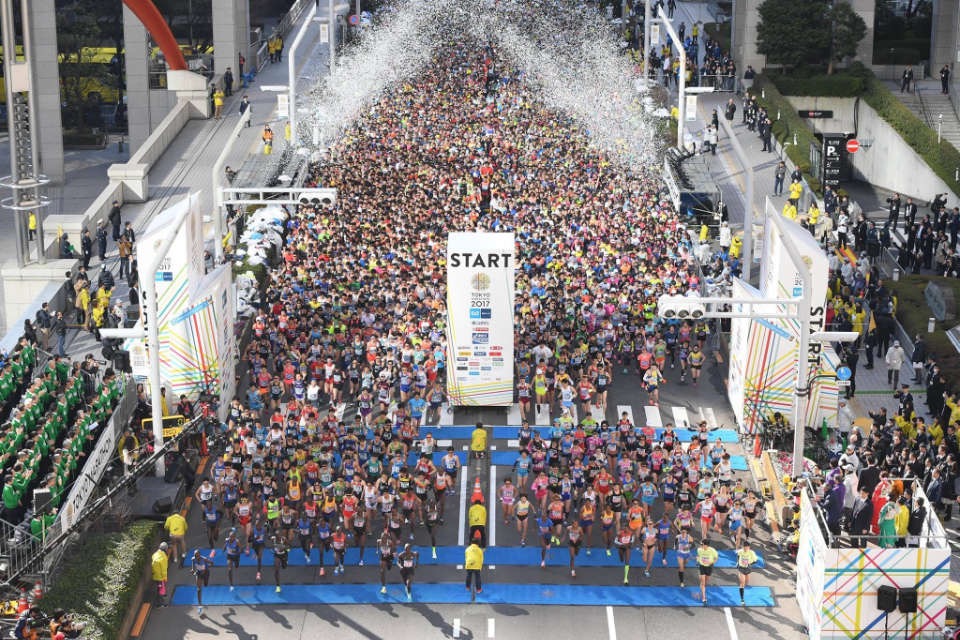
DAY 1: The flight and our arrival in Tokyo
Unlike my other marathon trips which I’ve done solo, I had the pleasure of travelling with another runner friend from Montréal, Pascale. And I am glad we went to Tokyo together because we had a blast !! We first flew from Montréal to Toronto and then boarded our direct flight to Tokyo. After an almost 13 hour flight from Toronto, 5 films and 0 sleep, my friend Pascale and I finally arrived in Tokyo the following day at around 4 pm local time. After collecting our luggage we headed to an information booth for advice on how to get to downtown Tokyo. Since we were both staying in the Shinjuku district, we were advised that the best way to get to our hotels was to take one of the buses that stop at the Hilton Tokyo. This service is extra convenient and drops you off at the entrance of the Hilton Tokyo. Furthermore, it costs only 3100 yen and it was very easy to buy our tickets and find the bus stop.
After checking into our respective hotels and relaxing for a little while, we headed out to try to find a nice Japanese restaurant. Luckily not far from my hotel we found the perfect spot to have a genuine Japanese meal. And we celebrated our arrival to this magical land with a glass of wine. Saving the Sake for the next few days !
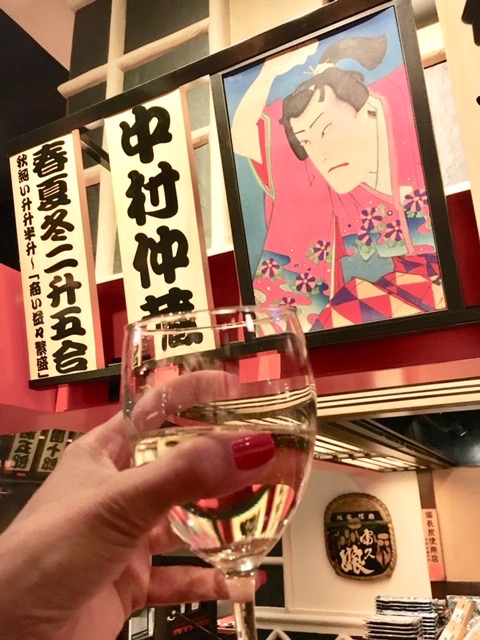
As I mentioned before, our hotels were both in the Shinjuku district. Shinjuku is a major commercial and administrative centre, housing not only one of the busiest railway station in the world but the Tokyo Metropolitan Government Building – where the marathon starts. So I recommend that you stay in or around this area for convenience, so that on race morning you are right were the action is.
DAY 2: Some Recovery and Relaxation
Jet lag and lack of sleep were definitely a recurring theme during our Tokyo stay, but it was to be expected so we did the best we could to try to get our bodies ready for marathon day.
On the next day of our arrival (a Thursday), we were scheduled to go to the Expo to get our bibs but we decided to take it easy and pamper ourselves instead. We went for a jog, swam for 20minutes at the Tokyo Hilton and followed this by a dip in the hot tub and relaxation in the sauna. Just what the doctor ordered !
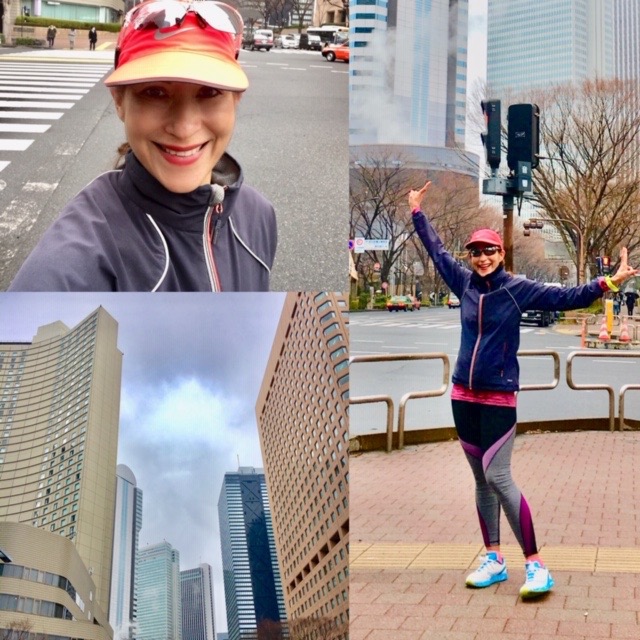
After our leisurely morning, we were feeling fresh even though neither of us had slept for more than three hours straight ! We had breakfast/brunch at a nearby Starbucks, returned to our respective hotels and then relaxed for the rest of the afternoon. That evening we decided to go to the New York Bar (where part of the film ”Lost in Translation” was filmed) at the Park Hyatt Tokyo. We enjoyed some incredible views of Tokyo by night while listening to some jazz. Priceless !

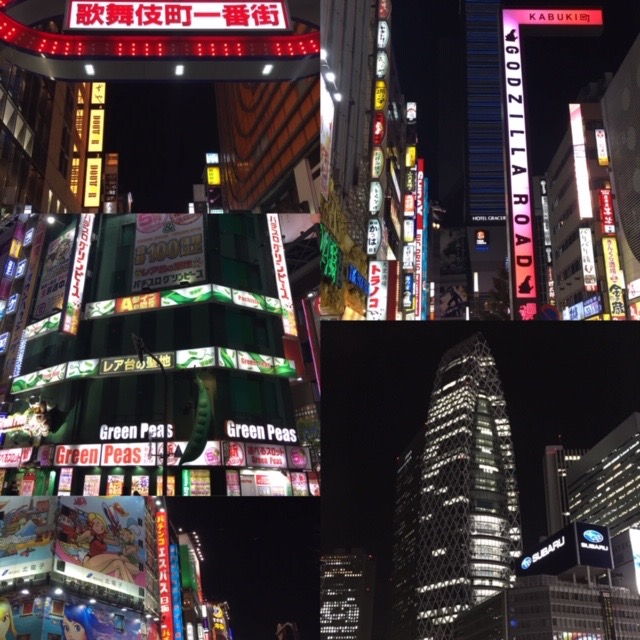
DAY 3: Tokyo City Tour and Tokyo Marathon Expo
Friday was to be for a Tokyo City Tour in the morning and the Marathon Expo in the afternoon. I will begin by giving you an overview of the Tokyo Marathon Expo.
The Tokyo Marathon Expo
The expo is held at the Tokyo Big Sight which is easily accessible by bus and subway. Bib and bracelet pick up is well organized and goes pretty smoothly. For security reasons, you are required to have a picture taken of you with your bib. Moreover since race security is a priority for the Tokyo Marathon. all runners must wear their Tokyo Marathon wristbands which includes a chip with your vital information.
As far as shopping at the expo is concerned – it is an experience in itself, unlike any marathon expo I’ve been to before. Why ? Because among others, it is quite loud, most of the signs in the stalls are in Japanese and there isn’t much running clothes and gear, sports related electronics or sports nutrition to chose from. There is a big Asics store but by the time we arrived, there wasn’t much race gear left. I really wanted to buy a race jacket but there was none left my size. Bought a Tokyo Marathon cap and a cute little back pack and that was pretty much it. If you want to buy Tokyo Marathon souvenirs though there are plenty: key chains, mugs, towels, calendars, you name it !
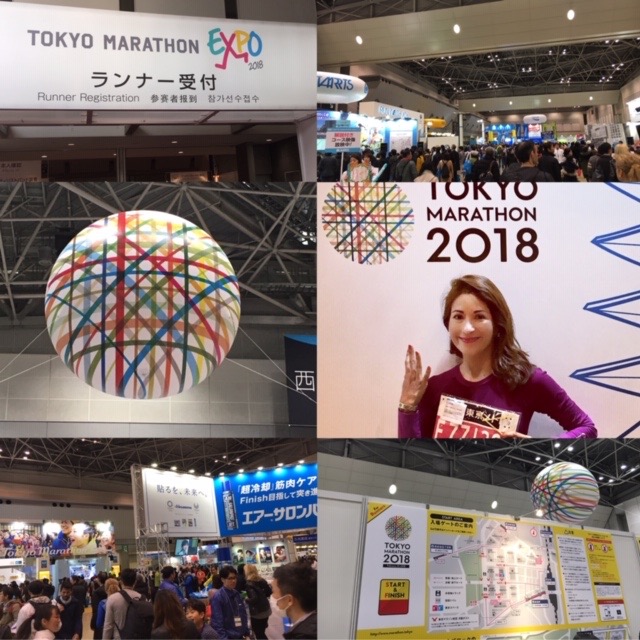
The Tokyo City Tour
Out of the 21 marathons I’ve done, Tokyo is probably the only one where I’ve done the ”tourist thing” before the marathon. Usually, I just concentrate on getting all my logistics for the marathon ready, get in the zone, run my marathon and then enjoy the city afterwards. But Tokyo is Tokyo. And since my friend Pascale was with Marathon Tours, I had the opportunity to tag along their organized Tokyo City Tour in exchange of a fee. We boarded a shuttle bus which took us around Tokyo.
The Sensoji Temple in Asakuza
We began the tour by visiting Tokyo’s oldest temple: the mesmerizing Sensoji Temple and Shrine in Asakuza. The official name of the Sensoji Temple is ”Kinryuzan” or ”Golden Dragon Mountain”. This is a MUST visit my friends !!! The Sensoji Temple is a 15 minute train ride from Tokyo Station and 20 minutes from Shinjuku. Here is where Tokyo’s biggest souvenir market is as well. There are many ways to visit the Sensoji Temple and its surroundings, but the standard is to start at the Kaminarimon Gate with the huge red cochin lantern is and then move up.
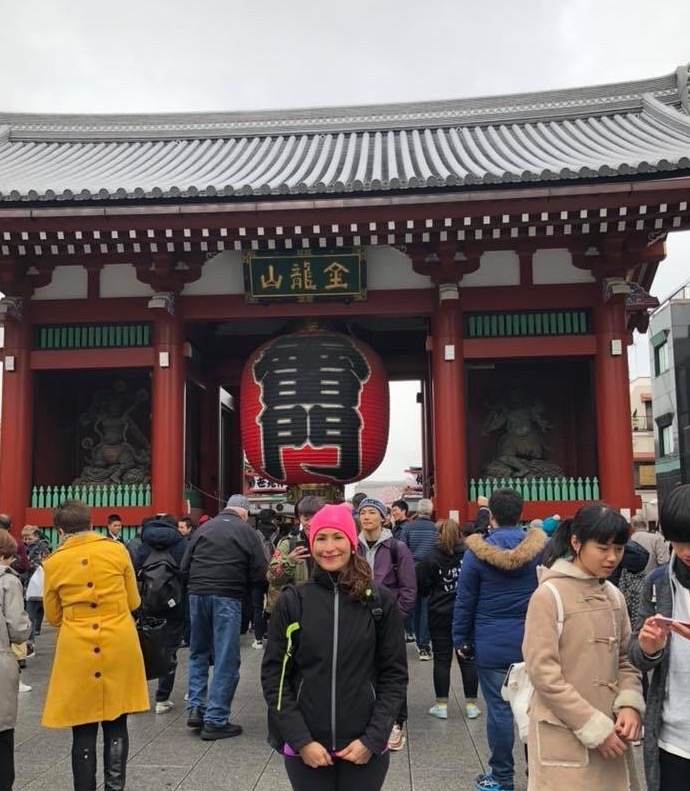
The pictures below show the Hozomon or ”Treasure-House Gate” which is the Sensoji Temple’s actual main gate. To the left of the Hozomon Gate, there is a five storey pagoda called the Goju no To which is closed to visitors because it’s a graveyard (see picture on the right). Apparently, not a lot of pagodas like this in Tokyo so take lots of pictures !
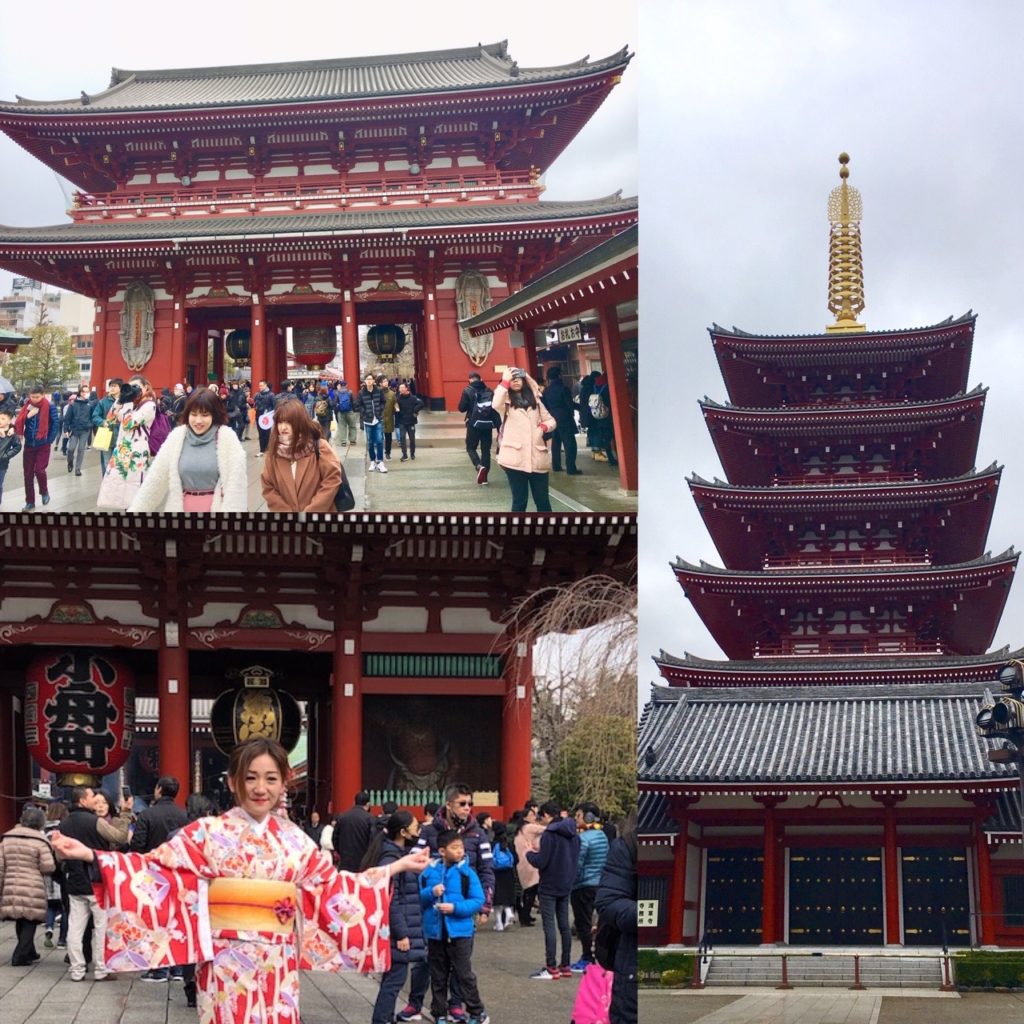
Once you have passed the Hozomon Gate, you have arrived at the main Sensoji Temple: the Hondo or Kannon-do. This is an ancient Buddhist temple dedicated to Kannon Bosatsu, the Bodhisattva of compassion, and according to Wikipedia it is the most widely visited spiritual site in the world with over 30 million visitors annually .
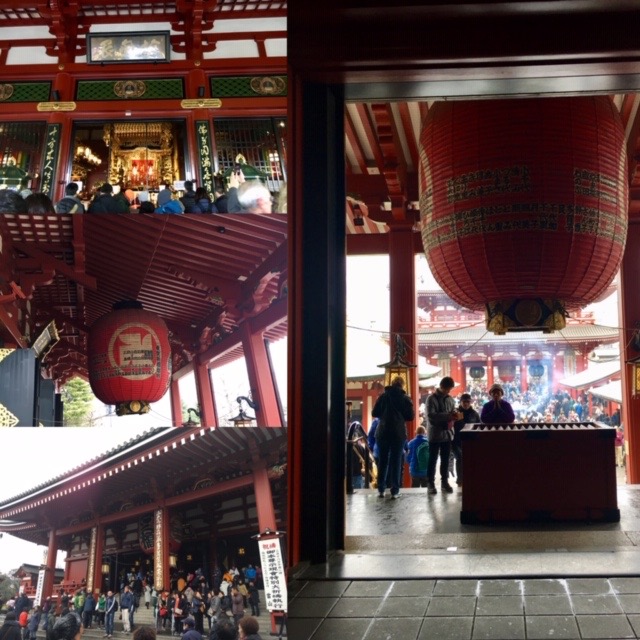
The street lined with souvenir shops that extends about 250m from the Kaminarimon entrance to the Hozomon Entrance is called the Nakamise Dori, meaning “inside street”. Approximately 90 stores line the street and you can find here traditional Japanese snacks and sweets and Japanese-style souvenirs, accessories, toys, fans, t-shirts, etc. Its decorative lanterns, seasonal decorations and cobble stones give to this street an unmistakably Japanese atmosphere.
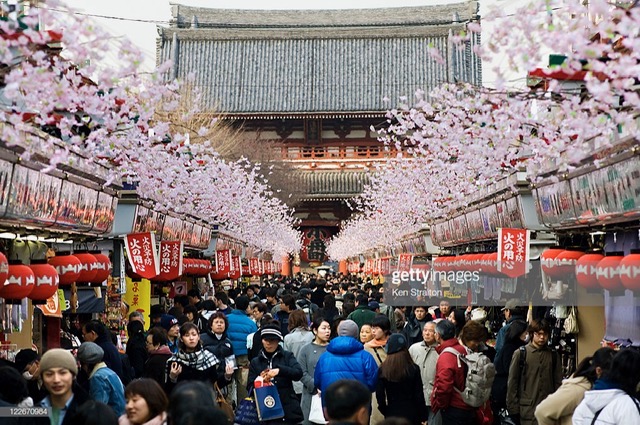
Traditional Japanese Meal
After visiting the Sensoji Temple, we boarded the chartered bus and headed to a traditional Japanese restaurant for a Kaiseki meal.
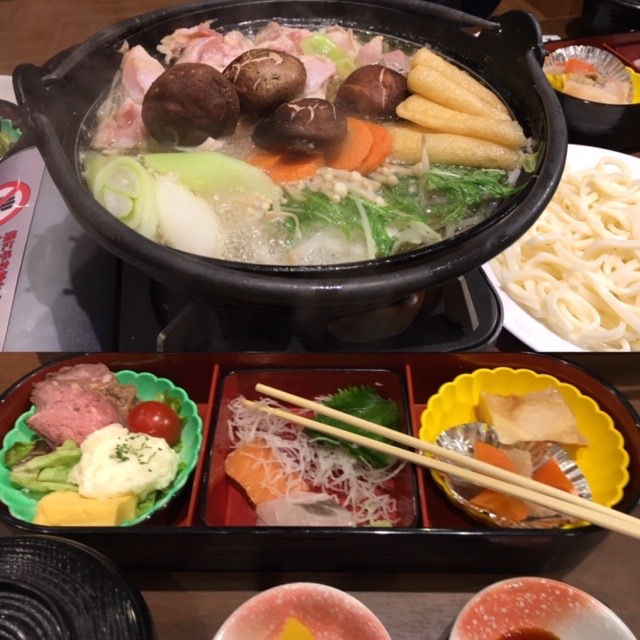
The Meiji Jingu Shrine and Temple
After lunch, we headed to the Meiji Jingu Shrine and Temple. While not as spectacular as the Sensoji Temple, the Meiju Jingu Shrine and Temple is another MUST do. It’s located in the Shibuya District in a big forest that covers an area of around 70 hectares and it’is adjacent to the big Yoyogi Park. It’s a beautiful and peaceful walk. I would recommend this outing the day or two after the marathon to get that lactic acid moving ! The Meiju Shrine is a Shinto shrine that is dedicated to the spirits of Emperor Meiji and his wife.
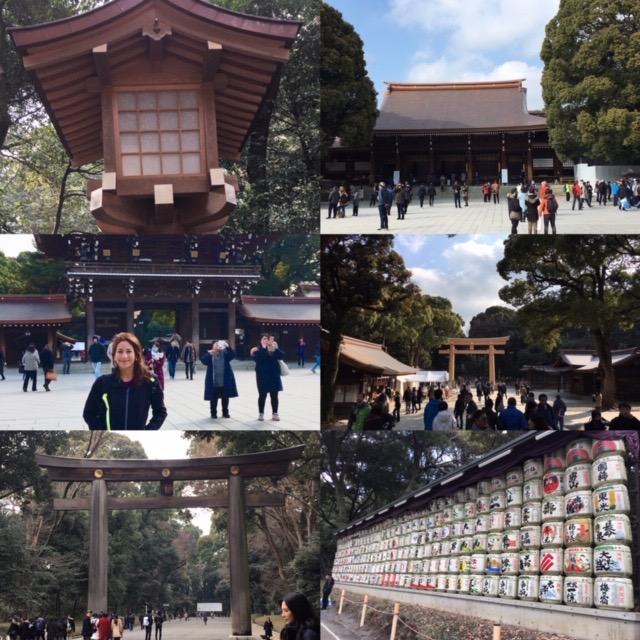
Taiko Drums
And our Tokyo City Tour wouldn’t have been complete without a Taiko performance ! Taiko are a broad range of Japanese percussion instruments. A Taiko performance is characterized by an ensemble playing on different types of barrel-shaped drums. Performance styles vary widely across groups in terms of number of performers, repertoire, instrument choices and stage techniques. Voiced calls or shouts called kakegoe and kiai are also common in Taiko performances. Needless to say this was an incredibly uplifting and inspiring show ! The performers got everyone moving and even invited some of us to the stage. It totally got us marathon runners motivated and pumped to run one of the greatest marathons of our lives ! I highly recommend that you go see a Taiko performance while in Tokyo, it will inspire you.
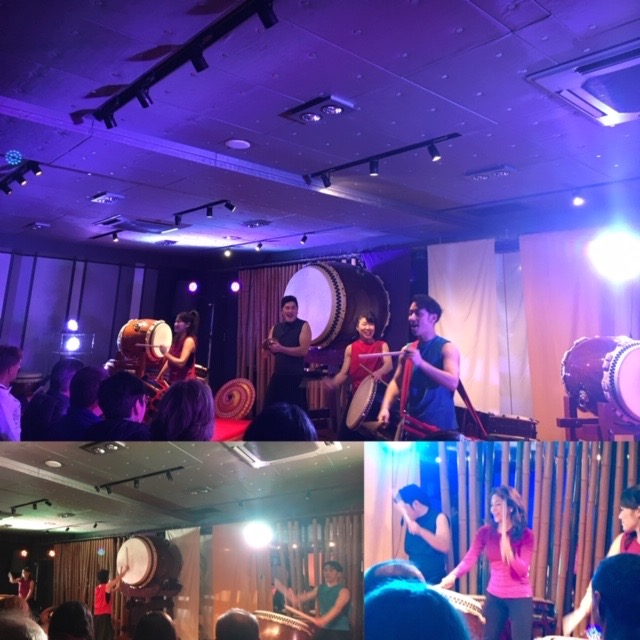
DAY 4: Pre-race logistics and exploring the area around the starting line
The day before the marathon was all about making sure I had everything ready for the big day (fuel, clothes, vaseline, poncho if it ever rained, etc.) and that I familiarized myself with the starting line area. Because I was too tired due to the jet lag, I decided to skip the Friendship Run. So that morning, I had breakfast with Pascale and Patrick, another friend from Québec who was running, and then I took it easy at the hotel. I selected my outfit, shoes and accessories to make sure I wasn’t missing anything important. I say selected because I had brought a ”few” options to Tokyo “just in case”.
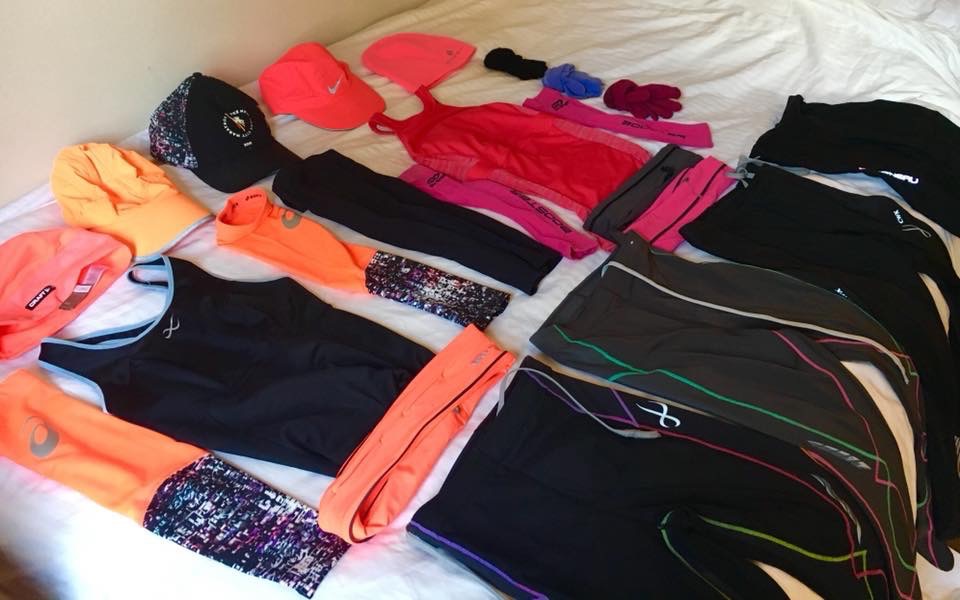
Luckily, I was not missing anything except for a plastic poncho in case it rained. I bought it at the local convenience store without problem along with a couple of bottles of water and some Pocari Sweat to taste. TIP : since you are not able to bring your own fuel, you NEED to familiarize yourself with the fuel that is provided at the course. In 2018, it was the Pocari Sweat energy drink and I believe there was also some kind of tapioca pudding given to us along the course as well. The Pocari Sweat is available in all convenience stores in Tokyo. You can also get it thru Amazon if interested to try it on your training runs prior to arriving in Tokyo.
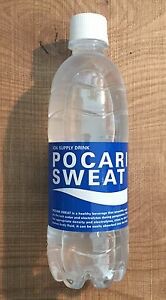
That afternoon, I went for a tour of the starting area to make sure I familiarized myself with the starting line, my entrance gate, etc. It’s all at and around the Tokyo Metropolitan Government Building in Shinjuku. Preparations were underway and you could feel the electricity in the air ! Below is the starting line area. You will notice the metal plaque in the bottom picture: it is on the road at the EXACT place where the marathon starts and I believe where the elites line up. Try to see if you can find it while in Tokyo !
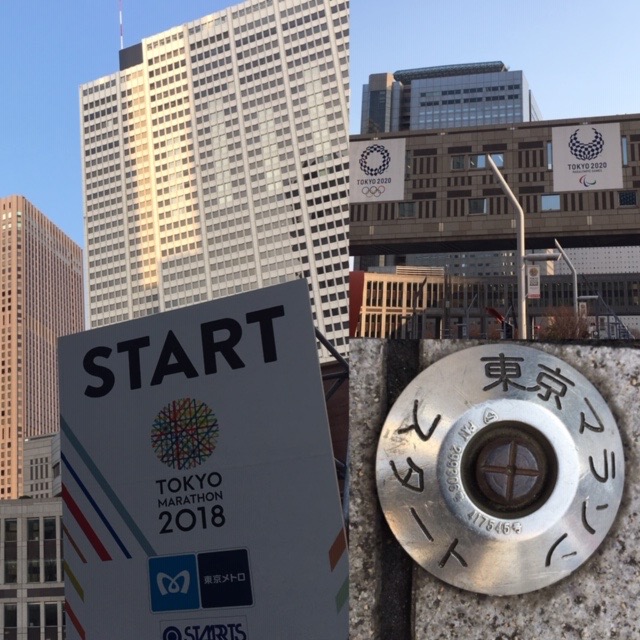
Before our pasta dinner with Pascale and Patrick, I went for a little stroll around my hotel. Took a few pics including on the left, the LOVE sculpture by Robert Clark and on the right my favourite Tokyo building, the Cocoon Tower.
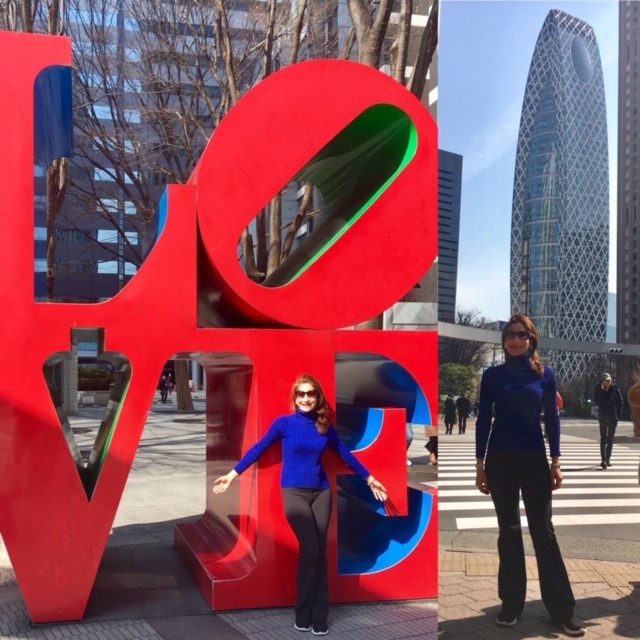
DAY 5: Race Day
One of my favourite mottos on race day is : “The rehearsal is over. This is IT”. Unfortunately, another sleepless night before marathon. BUT I was PUMPED, I was mentally ready for my first marathon in Asia. I was also extremely proud and honoured to be running for the Japanese charity organization Special Olympics Nippon. As an autism mom and autism/disability rights advocate, this cause is and will always be extremely close to my heart ️.

Pre-Race Breakfast
The decision was made that I would have breakfast with Pascale and Patrick at the Hilton Tokyo the day of the marathon. In no way I’m affiliated with the Hilton Tokyo, but for the sake of easy logistics I would recommend that you have your pre-race breakfast at this hotel. It is literally 5-10 minutes from the starting line gates and the selection is great with a full continental breakfast: eggs/omelettes, a variety of meats, yogourt, bagels and tons of pastries, you name it ! Had breakfast, went back to my hotel to finish up my marathon pre-race prep and off I was to run one of the greatest marathons of my life !
The Course
The Tokyo Marathon was a brand new course last year and it’s pretty pancake flat like Berlin, Chicago and London. In the first hour you go over a few tiny overpasses that are nothing compared to NYC’s bridges/hills !! Compared to other city marathons where you go thru downtown but also residential neighbourhoods and parks, Tokyo’s course feels a little bit boring and urban as it’s mostly run through many high-rise lined streets and store fronts. TIP: Beware of the Skycrapers and the way they mess around with your sport watch’s GPS. During a few segments of the race, specially the first hour I wasn’t able to get the proper pace in my watch.
And although the Tokyo Marathon feels very urban, we also have the opportunity to run by the Sensoji Temple in Asakuza and see the majestic Kaminarimon Gate.

We also have the opportunity to run by the Tokyo Skytree and have race pictures taken by the iconic Tokyo Tower.
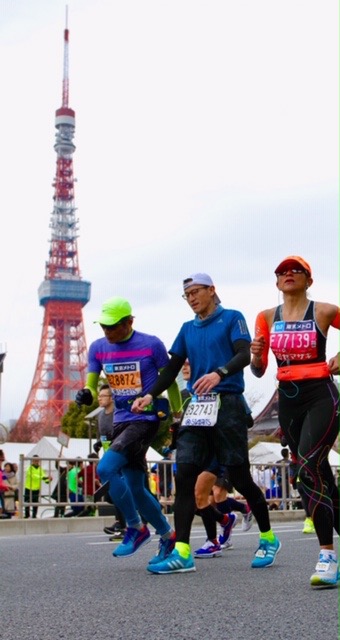
Aid Stations, Volunteers, Entertainment
As far as the crowds and volunteers were concerned, this course had both in loads. The entire course is full of fans cheering for the marathon runners, and although not as wild and passionate as the NYC crowds, the crowds are enthusiastic and generous, clapping, giving high-fives, cheering and handing away goodies along the course like fruit candies, cookies, pieces of fruit. The volunteers were literally everywhere, at the aid stations handing out snacks and drinks and also cheering for runners along the whole course with huge garbage bags ready to collect wrappers from snacks or cups. TIP: friends, please use the garbage bags to throw out your cups, gel or snack wrappers. Keep the Tokyo Marathon clean – the cleanest marathon I’ve ever run in my life !
There were 15 aid stations throughout the course offering water and Pocari Sweat. Around the 17-18km mark, there were food stations with bananas, cherry tomatoes and other fruits as well as snacks including some traditional Japanese ones.
The entertainment was ok but not at the level of other Majors like New York, Chicago, London and Berlin. Among others they had military bands, choirs and my absolute favourite – the Taiko drummers.
Finish Line/Post Race Situation
As far as the finish line/post race situation, it was a little complicated. When we finished the race, runners were directed through the finish corral based on bib colour. I ran for a charity so my bib colour was pink. I followed the signs and got my medal, a blanket and a snack bag. And although I had to walk a lot to get to the buses that were taking us to the Charity Lounge, I heard from other international runners who were not running for charity, including my friend Pascale, that they had to walk a LOT more than me to get their medals, snack bags and blankets. And they had to walk some more to get to the exit.
Notwithstanding the post- race situation, this was one of my greatest marathons experiences ever. For me, it was one emotional moment to receive such a beautiful medal in Tokyo that February 25th. I could not help but get a little weepy as I approached the finish line and began to realize that I would be completing my freakin’ 20th marathon & 4th Abbott World Marathon Major. Despite having trained for only 2 months and 1/2 and with a MAXIMUM of 4 runs on asphalt because of the weather elements in Montréal, I ended up running my third fastest marathon time. Here is me at the starting area and to the right completely overjoyed at having completed my first marathon in Asia.

Of all my 21 race medals, the Tokyo one is one of the most beautiful, delicate and unique.
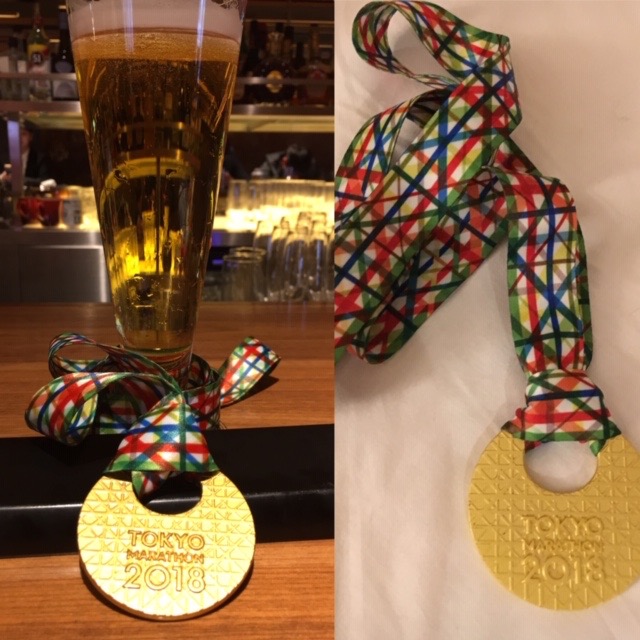
Post-race, Pascale , Patrick and I joined the Marathon Tours crowd for dinner and drinks. It was not a late night as we were wiped. I went to bed tired thinking that I would finally sleep thru the night…but it was not to be !! We were all awakened by a mini earthquake (there are a lot of these mini earthquakes in Tokyo) at around 3 am !! Went back to sleep but woke up at 5 am again. Another sleepless night in Tokyo…TIP: As I said previously, lack of sleep was a recurring theme not only for me but for most fellow six star medal chasers from all over the world whom I met. Bring Melatonin or use any sleep device or app that can help you get a good night’s sleep from your first night on if you can (see my Blog post on Sleep to check out some useful apps or bring with you a handy device like the Dodow, check following link https://www.mydodow.com/dodow#ae216).
DAY 6: Hotsprings, Shibuya and Isakayas
Blissful Spa Day at the Thermae-Yu Hotspring
When you’ve just run a marathon in Tokyo…a visit to Spa Thermae-Yu Shinjuku (http://thermae-yu.jp/este/ ) is an absolute MUST !! Although our bodies were in relatively good shape after the marathon, my friend Pascale and I were still in need of some R&R, specially because of the lack of sleep situation. So a visit to Thermae-Yu it was !! This is one of Tokyo’s biggest and most beautiful spas and is equipped with a huge sauna and different baths with water from natural hot springs. There is a different section for women and for men. In the women’s section, there are a few indoor hot baths, one big outdoor bath with water imported everyday from Nakaizu, a VERY cold water bath, a silk oil bath and….a rose petals bath (YES rose petals !!! ). There is also a section where you have access to detoxifying mud and salt to give yourself a face and body scrub massage…it was just pure BLISS…
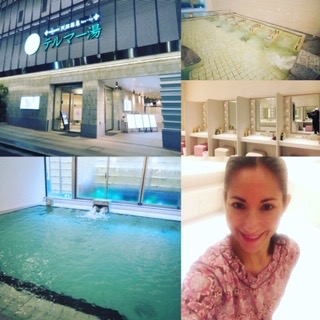
Shibuya District and the Shibuya Crossing
After our blissful Spa morning and early afternoon, we went for a walk. Since it was mild and sunny out, we decided to buy some take-out food at a convenience store and sit outside. We then plotted the rest of the day visits. First, we passed by a huge souvenir store somewhere in Shinjuku to get some souvenirs for our respective families and then we decided to go to the Shibuya District. Shibuya is a major commercial and business centre housing the two busiest railway stations in the world, Shinjuku Station and Shibuya Station. Shibuya is also known as one of the fashion centres of Japan specially for young people. It is also a very popular dining and nightlife area.
So we headed to Shibuya from the Shinjuku Station. When we arrived at the station we were mesmerized by the amount of pedestrians coming and going. It was around 4-5pm when we arrived and there were people in suits, teenagers in uniforms, parents with children, etc. Each time the crossing light turns green it literally gets FLOODED with pedestrians coming from all directions. It’s pretty insane ! In fact, this large intersection in front of the station’s Hichiko Exit is a landmark of Shibuya called the Shibuya Crossing. It is rumoured to be the busiest intersection in the world. It is heavily decorated by neon advertisements, all sorts of lights and giant video screens. This is Tokyo at its best my friends !
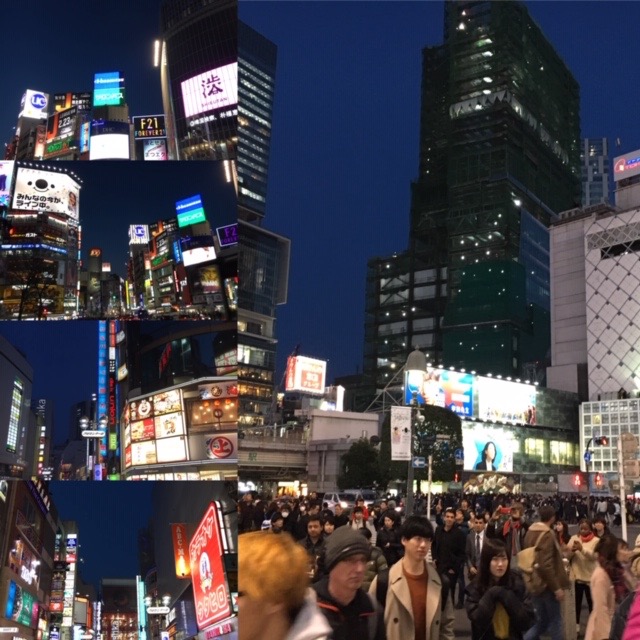
The Omoide Yokocho Alley and its delicious Isakayas
And saving the best for last. THIS my friends was my absolute COUP DE COEUR, one of the best kept secrets in Tokyo and one that we discovered by accident with my friend Pascale: the Omoide Yokocho Alley. This is a maze of narrow alleys near the Shinjuku Station West exit. It houses tiny restaurants and open barbecue food stalls called Isakayas. The buildings are old and mostly run down and the food stalls are very traditional. Lots of smoke and noise coming from the Isakayas. Decorative lanterns and little plastic white flowers decorate the alleys…and as I write this I get a little emotional as I remember the smiles and laughs of the cooks and the super friendly patrons that we met in these Isakayas. Needless to say this particular spot in Tokyo will ALWAYS have a place in my heart. Just a magical spot !
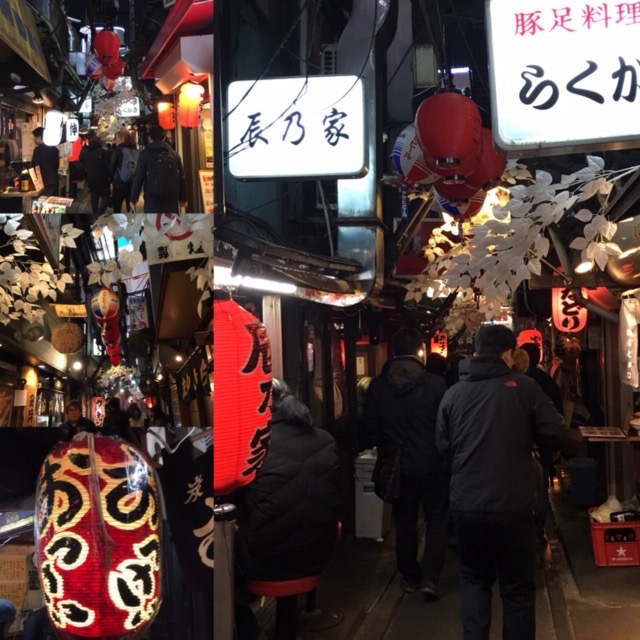
An Isakaya is a type of informal Japanese pub or bistro. They are casual places for after work drinking and eating. This can be compared to a tapas bar or an Irish pub. Most of the time, costumers drink/dine from low tables, sit on tatami mats or more commonly sit on stalls by the bar, like we did. Typically you sit down by the bar and order a beer or Sake and peruse the menu. Meals are normally prepared in front of you and served when they are ready. On the menu there is a variety of poultry, meat, seafood and vegetable skewers called Kushiyaki. There were also some delicious breaded tofu, some breaded oyster rolls and some yummy avocado tampura starters.
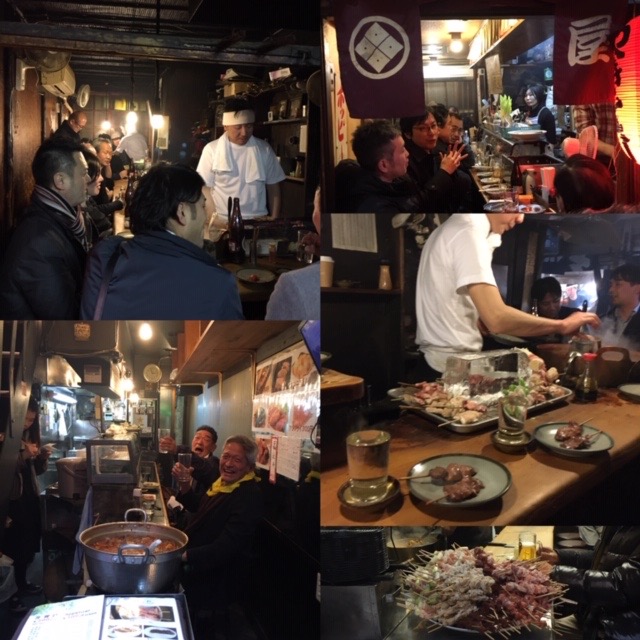
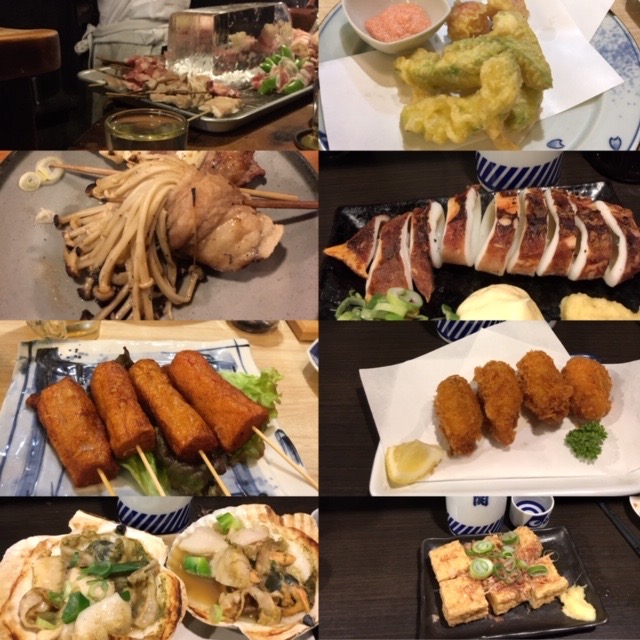
Conclusion
And this my friends concludes my Tokyo Marathon Trip blog post. What an unforgettable, special and magical week ! Thank you Tokyo…and specially THANK YOU to the Japanese people, some of the most welcoming, most polite and generous I’ve ever met. I will always remember and cherish your smiles and your positive attitude. Hope to be back one day to explore more of your beautiful country and maybe one day climb Mount Fuji…
With LOVE, Claudia
Copyright © 2019 Claudia Taboada – All Rights Reserved
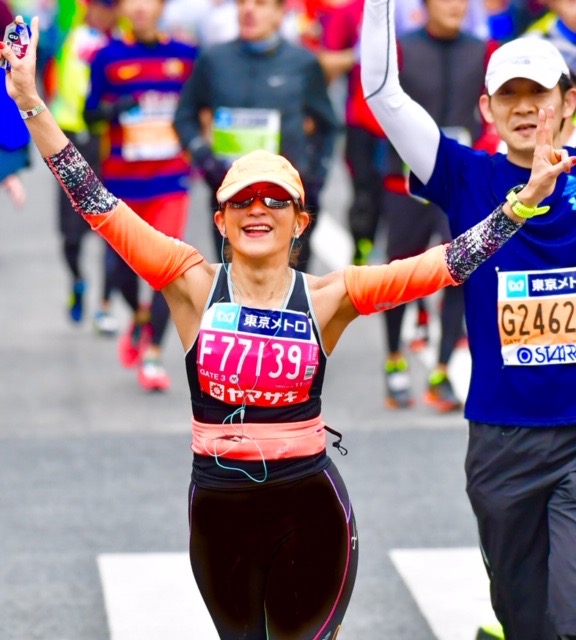
This is amazing, Claudia! The photos are breathtaking! I totally remember your race kit dilemma – and you made the right decision, you looked fabulous (as always!)! I can’t imagine running a marathon jet-lagged. You don’t look tired at all, just so vibrant and happy. You had a perfect trip, filled with sightseeing, great dining, spa relaxation, experiencing a different culture and of course, a marathon :). Thanks for sharing!
Thank you Diana for reading ! This trip was unforgettable, specially because of the Japanese people, so warm, so welcoming. I hope you and Guillaume have the opportunity to travel one day to Japan and run this marathon !
Absolutely enjoyed reading about your experiences. Yes, one can be forgiven for not getting in enough hours in this amazing city. Try flying from Cape Town, South Africa 😉..Totally agree with you, it’s the incredible, warm people that makes Toyko such a beautiful place to experience.
As I type this, it is 00:53am local time and I too am struggling to sleep.
All the best to you and your commitment to advocate for all minority rights.
Regards
Glenn
Thank you so much for reading ! YES ! It is the people of Tokyo that made this such an unforgettable and magical experience !! Good luck to you in your marathon journey. Hope to visit South Africa in the near future (maybe in 2020) as Comrades is one of the items on my bucket list once I complete my Majors in Boston this year. Cheers from Montréal ! Claudia